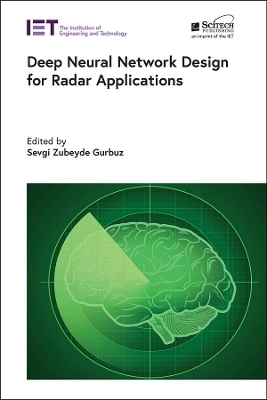
Deep Neural Network Design for Radar Applications
Institution of Engineering and Technology (Verlag)
9781785618529 (ISBN)
Novel deep learning approaches are achieving state-of-the-art accuracy in the area of radar target recognition, enabling applications beyond the scope of human-level performance. This book provides an introduction to the unique aspects of machine learning for radar signal processing that any scientist or engineer seeking to apply these technologies ought to be aware of.
The book begins with three introductory chapters on radar systems and phenomenology, machine learning principles, and optimization for training common deep neural network (DNN) architectures. Subsequently, the book summarizes radar-specific issues relating to the different domain representations in which radar data may be presented to DNNs and synthetic data generation for training dataset augmentation. Further chapters focus on specific radar applications, which relate to DNN design for micro-Doppler analysis, SAR-based automatic target recognition, radar remote sensing, and emerging fields, such as data fusion and image reconstruction.
Edited by an acknowledged expert, and with contributions from an international team of authors, this book provides a solid introduction to the fundamentals of radar and machine learning, and then goes on to explore a range of technologies, applications and challenges in this developing field. This book is also a valuable resource for both radar engineers seeking to learn more about deep learning, as well as computer scientists who are seeking to explore novel applications of machine learning.
In an era where the applications of RF sensing are multiplying by the day, this book serves as an easily accessible primer on the nuances of deep learning for radar applications.
Sevgi Zubeyde Gurbuz is an assistant professor of electrical and computer engineering at the University of Alabama, USA. She received the SPIE Defense and Commercial Sensing Rising Researcher Award in 2020. Her research interests are in radar signal processing and machine learning for applications ranging from human activity and gait analysis for remote health monitoring in biomedical engineering to American Sign Language and gesture recognition for human-computer interaction, and multimodal remote sensing for earth sciences.
Prologue: perspectives on deep learning of RF data
Part I: Fundamentals
Chapter 1: Radar systems, signals, and phenomenology
Chapter 2: Basic principles of machine learning
Chapter 3: Theoretical foundations of deep learning
Part II: Special topics
Chapter 4: Radar data representation for classification of activities of daily living
Chapter 5: Challenges in training DNNs for classification of radar micro-Doppler signatures
Chapter 6: Machine learning techniques for SAR data augmentation
Part III: Applications
Chapter 7: Classifying micro-Doppler signatures using deep convolutional neural networks
Chapter 8: Deep neural network design for SAR/ISAR-based automatic target recognition
Chapter 9: Deep learning for passive synthetic aperture radar imaging
Chapter 10: Fusion of deep representations in multistatic radar networks
Chapter 11: Application of deep learning to radar remote sensing
Epilogue: looking toward the future
| Erscheinungsdatum | 08.02.2021 |
|---|---|
| Reihe/Serie | Radar, Sonar and Navigation |
| Verlagsort | Stevenage |
| Sprache | englisch |
| Maße | 156 x 234 mm |
| Themenwelt | Technik ► Nachrichtentechnik |
| ISBN-13 | 9781785618529 / 9781785618529 |
| Zustand | Neuware |
| Informationen gemäß Produktsicherheitsverordnung (GPSR) | |
| Haben Sie eine Frage zum Produkt? |
aus dem Bereich

